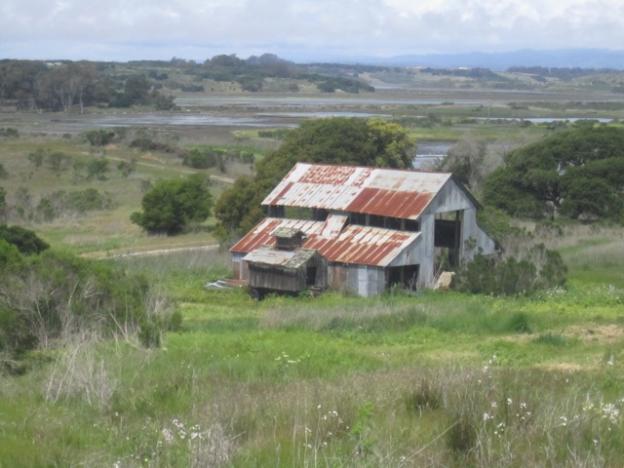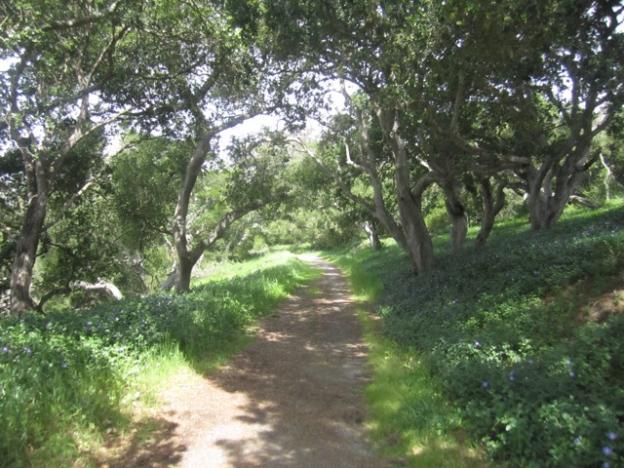Peek in on nature’s tidal rhythms along this gentle semi-loop following the estuary’s forested edge. You can also explore a small island reclaimed years ago from the marsh, now a haven for hummingbirds.
From the visitor center, the trail descends gradually, curving through a large meadow toward the shore. Hang right after the overlook toward the two standing barns, then a left as you approach the larger, open-air barn. (These are the last remnants of the Elkhorn Dairy Farm, which packed up its cows and removed its dikes 30 years ago, returning the marsh to tidal action after a half-century of stagnant pools and pasture.)
Clamshells have been strung along the shore of the South Marsh—visible at low tide—as experimental bedding ground for oyster larvae to latch onto. You may bump into a volunteer or researcher taking plankton samples along the way, happy to satisfy your curiosity.
A wooden boardwalk leads over the marsh for closer inspection. And shortly after, another detour on the left leads you out across a levee, over Whistle Stop Lagoon and the train tracks, to Hummingbird Island. There’s a wooden outhouse just after you cross.
Surrounded by the yielding grace of the slough and gentle hills, it’s worth taking your time here. The island was envisioned as a candyland arcadia for hummingbirds in the late ’80s, and a couple of beguiling art-in-nature sculptures speak to that vision. The path winds first around a dome-shaped, wire cage containing a tall tree stump. Intended as a trellis, it supports native honeysuckle vines and other nectar enticements.
The other piece, a mound of layered oyster shells cut to form a pool, serves as the only source of fresh water on the island, but neither appears to have been given much care in a while. Eucalyptus rings the edge of the island further in.
Cross back over the levee and stay left to continue along the South Marsh Loop. There’s also a quarter-mile extension to North Marsh Overlook if you want to extend your walk. Follow the loop inland as it winds back up, skirting the slough and birds. You’ll find gorgeous views later in the day as the sun starts to drop on the enclosing hills.
There’s also a rookery pond on the left—most active in May, when egret parents begin teaching their fledglings to fly, which promises to be a very amusing sight. Continue along the tree-lined path past Cattail Swale, a large, swampy freshwater pond, then it’s a short walk up the hill and back.
—Garrett McAuliffe
Back to Elkhorn Slough.
Category:


















